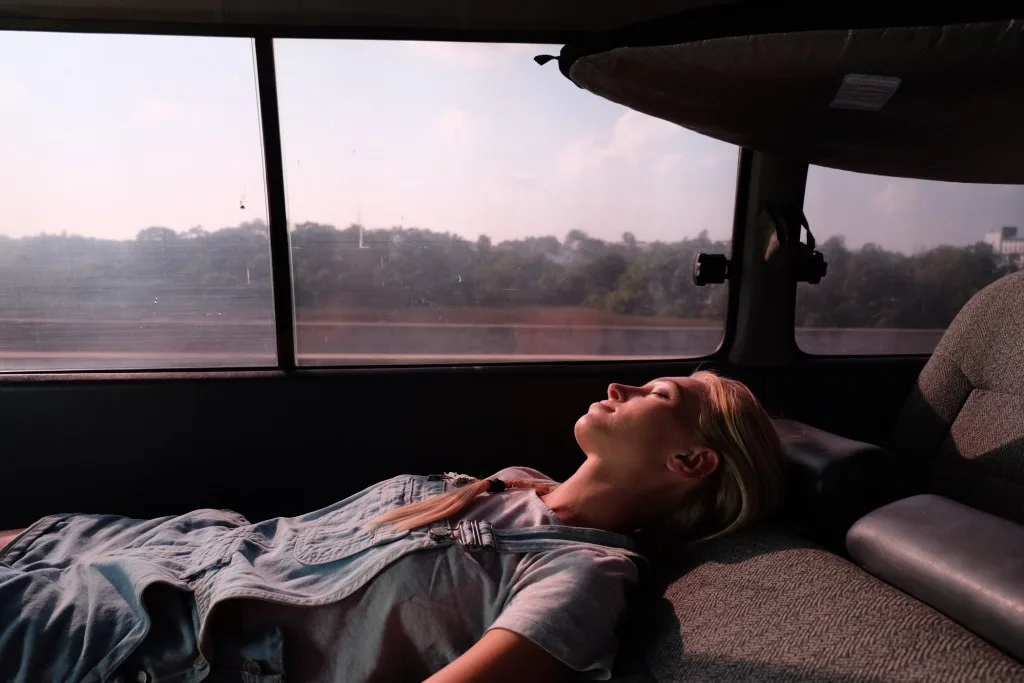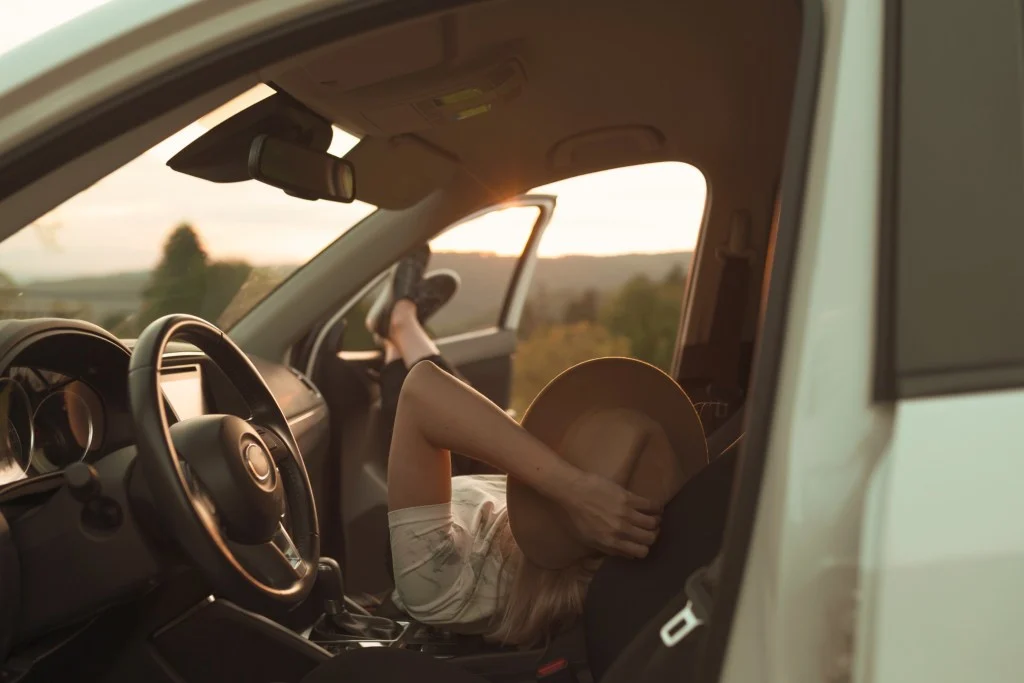You may think of tent camping and RVing as your only option when it comes to camping. However, car camping is a unique style of camping that’s gaining popularity across the country.
Many state and private campgrounds discourage or prohibit sleeping in your car, but what about a national forest?
Can you sleep in a car in a national forest? Let’s take a look!
What Are National Forests?
National Forests are typically large forests or wooded areas owned and managed by the federal government, mainly the United States Forest Service. There are 154 national forests throughout the country, but 87% of the land lies west of the Mississippi River.
Conservation, timber, harvesting, livestock grazing, watershed protection, wildlife, and recreation are essential points of emphasis for those managing these lands.
If there’s national forest land near you, these can be great locations to get out and enjoy the outdoors. Whether you’re looking for a hiking trail, a place to fish, or a chance to spot wildlife, many national forests can provide it.
The United States Department of Agriculture’s website makes it incredibly easy to find the nearest national forest to you.
Do National Forests Have Campgrounds?
One of the best ways to enjoy a national forest is to camp in it. Many national forests offer campgrounds with designated sites that allow camping. Remember that amenities are typically sparse, and rules and regulations vary from one campground to the next.
Locations with designated campsites typically won’t allow camping in any other location, and you can’t create new campsites.
Depending on your preferred camping style, national forest campgrounds can make for great places to camp. You’re surrounded by nature and often experience much more privacy than you might in a state or private campground.

Is Dispersed Camping Allowed in National Forests?
There are many national forests without campgrounds, but they may allow dispersed camping. This means you can camp anywhere in the national forest but still must follow a few guidelines. You’re usually required to camp 100 or more ft away from water sources and keep your site within 150 ft of roadways.
Many dispersed camping locations are very rustic and offer little to no amenities. You’ll likely need to come prepared to be self-sufficient for your trip.
This includes having sufficient water and food and a plan for liquid and solid waste. While this camping style is less luxurious, the peace and quiet can be refreshing.
Does Sleeping in a Car Count as Camping?
Sleeping in a car can count as camping, but it depends on where you’re parking your car. If you pull over at a rest stop or parking lot to sleep for a couple of hours while on the road, you’re not camping.
However, if you’re driving your car to a forest or a campsite, this can be a style of camping that allows you to camp in some unique places with incredible landscapes and privacy.
Can I Sleep in My Car in a National Forest?
Yes, you can sleep in your car in a national forest. However, you must follow the same rules and regulations as others while camping. You want to find a spot that’s easily accessible and doesn’t require you to drive over vegetation.
Make sure your vehicle is out of the way for other vehicles that may need to access the road while you’re parked.
Pro Tip: If you’re going to sleep in your car while adventuring, this is How To Camp Out of Your Car, Legally.

The Pros and Cons of Car Camping
Car camping has its pros and cons, but it can be a fantastic camping style. With 91% of American households having access to a vehicle, car camping is an option many explore if they’re new to camping or enjoy minimalist camping. It requires much less investment than RVing, and you don’t have to worry about learning to tow a large trailer.
On the other hand, car camping is typically much less luxurious than tent camping or RVing. Most manufacturers didn’t design passenger vehicles with camping in mind.
This means you’re going to have to get creative when it comes to maximizing your space, especially for sleeping. Depending on your vehicle, you may not have much room to work with when bringing camping gear, supplies, or even fellow campers with you.
If car camping is a style of camping that appeals to you, some of the cons may be easy to overlook. Car camping is one of those things that seems to get easier the more you do it.
You can maximize the benefits and help navigate the negatives to create a smoother and more enjoyable camping adventure.

Tips for Car Camping in National Forests
You need to be aware of a few things if you’re looking to go car camping in any national forests. By following these tips, you not only will have a better experience, but you’ll also ensure future campers can camp as well.
Follow Forest Service Rules
Rules and regulations will vary from one national forest to the next. It’s up to you as the camper to be aware of specific rules and regulations for any location you plan to camp in.
Know how long you’re allowed to camp, as many locations have stay limits, and these can vary depending on the season. Check local websites or call a local or regional forest service management office if you have any questions regarding the rules for camping.
Choose Your Spot Carefully
The spot you choose is key to getting a good night’s sleep and having an enjoyable experience while car camping. You want to find a level spot to park. If you’re uneven, it may be challenging to get comfortable while you’re lying down in your vehicle at the end of the day.
Considering others when picking your spot is important. You want to maximize your privacy and not be in the way. Blocking roads or paths that others might need won’t go over well with your fellow campers. If you’re planning to car camp, find a spot that’s easily accessible and doesn’t damage or destroy vegetation.
Prepare to be Self-Sufficient
You’re most likely not going to find electricity, water spigots, or restrooms. You need to come with plenty of food and water to last the duration of your adventures.
Preparing food will also be important, so having a camp stove or the ability to start a fire is important.
Leave No Trace
One of the most prominent reasons land management agencies are shutting down camping on public lands is because not all campers practice “leave no trace.” This practice is exactly as its name implies; there should be no indication that you were at a campsite when you leave. So before you leave, you must scan the area for any trash or other items you may have left behind.
Doing so helps ensure that future generations can enjoy the national forests for years to come.
Pro Tip: Never heard of leave no trace? This is Why RVers Must Leave No Trace?
Would You Sleep in Your Car in a National Forest?
Sleeping in your car in a national forest can be a fun and exciting way to camp. You don’t have to have a massive RV or expensive tent to enjoy the national forests in our country.
Whether you’re looking for a spot to camp for your next adventure or just passing through, a national forest is a great option.
Have you ever slept in your car in a national forest? Let us know in the comments below!
Discover the Best Free Camping Across the USA
To be honest with you, we hate paying for camping. There are so many free campsites in America (with complete privacy).
You should give it a try!
As a matter of fact, these free campsites are yours. Every time you pay federal taxes, you’re contributing to these lands.
Become a FREE CAMPING INSIDER and join the 100,000 campers that love to score the best site!
We’ll send you the 50 Best Free Campsites in the USA (one per state). Access the list by submitting your email below:
Car camped in many vehicles. My 79, Chevette, 86 Mercury Lynx, 98 Olds mini van, 2006 Kia Sedona mini van and 2011 Kia Forte. With the exception of the two mini vans the others were small compact cars, but all hatchbacks. Being only 5’7″ helps, as in all 3 bu folding the seats it’s created a space 6′ long. Perfect for me.
People would ask how I could sleep in such a small space, especially the low overhead. I replied that when sleeping what use is an 8′ ceiling. Being off the ground and inside the car is far warmer than sleeping in a tent in cold weather. I’ve camped in below freezing trmps. Warm sleeping bag of course. I would leave my keys in the ignition, then upon waking I would stretch my arm out to start the car and pull back in. In 10 minutes I’m crawling out of my sleeping bag into a warm car, allowing me to dress for the outside cold in comfort. Can’t do that in a tent!